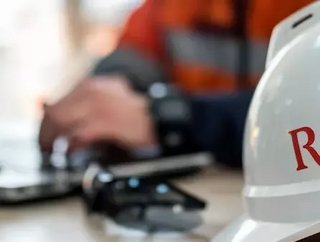Rio Tinto devotes $2.4bn to develop underground lithium mine

In a bid to become the largest source of lithium supply in Europe for the next fifteen years, Rio Tinto announced its plans to focus on fuelling the looming electric car revolution through its new US$2.4bn underground lithium mine: the Jadar project. The project brings with it the potential promise of “powering over one million electric vehicles per year.”
Serbian underground mine project set to source lithium
It's easy to see why Rio Tinto has been keeping a keen eye on the mine’s potential. Based in Serbia, the exciting new development is currently set to become one of the largest greenfield lithium mining and processing operations in the world, adding to the rapidly expanding portfolio Rio Tinto already holds.
As a project centralised around the production of lithium, it offers the mining giant the opportunity to scale up its battery-materials exposure and exhibit the company’s dedication to investing in the future of global energy.
The underground mine will include associated infrastructure and equipment with the addition of a beneficiation processing plant. The use of dry stacking of tailings is one of the measures in place to ensure the project meets the highest environmental measures in order to reduce the impact on the surrounding communities. Water management will also be monitored closely to ensure 70% of raw water sourced is recycled.
Rio Tinto’s sights are clearly set on going green. The project will see battery-grade lithium carbonate, a mineral imperative to the storing of renewable energy and the production of electric vehicle batteries produced alongside borates used in solar panels and wind turbines. It’s hardly a surprise considering the demand on the mining industry is steadily becoming obsessed with the future of renewable energy and prospects for sustainability.
“We have great confidence in the Jadar project and are ready to invest, subject to approvals,” says Jakob Stausholm, Chief Executive at Rio Tinto. “Serbia and Rio Tinto will be well-positioned to capture the opportunity offered by rising demand for lithium, driven by the global energy transition, and the project will strengthen our offering, particularly to the European market.
“It could supply enough lithium to power over one million electric vehicles per year.”
While the project currently remains subject to approval and licensing, and negotiations are still ongoing with local communities and government, it’s predicted the Jadar development will get the go-ahead to begin its first saleable production by 2026 following construction starting in 2022. During this time, global market demand for lithium is expected to grow by 25-35% every year, and it seems Rio Tinto is keen to make its investments early in anticipation of an exponential growth in sales.
Rio Tinto strikes multimillion-dollar deal in anticipation of a future surrounding lithium
Stausholm is aware of the potential the Jadar project holds for the future success of the mining giant.
“The Jadar deposit and its unique mineral, jadarite, discovered by Rio Tinto geologists in 2004 contains high-grade mineralisation of boron and lithium, supporting a long-life operation in the first quartile of the cost curve for both products.
“We are committed to upholding the highest environmental standard and building sustainable futures for the communities where we operate. We recognise that in progressing the project, we must listen to and respect the views of all the stakeholders.”
With the goal set to produce 2.3 million tonnes of lithium carbonate over the course of 40 years, Rio Tinto seems set to consolidate its position in the field of growing competition.
The mine is predicted to produce up to 58,000 tonnes of lithium carbonate, 160,000 tonnes of boric acid, and 255,000 tonnes of sodium sulphate each year, securing the company’s top ten position among the world’s biggest and best producers of lithium in a future where the metal could become the most valuable currency of the mining world.
- Focus on: Lithium – ‘White Gold’ Driving the EV RevolutionSupply Chain & Operations
- Supply Chain in Mining: The Race for Critical Raw MaterialsSupply Chain & Operations
- Geothermal Engineering - UK’s first zero-carbon lithiumSustainability
- Chile to nationalise lithium industrySupply Chain & Operations






